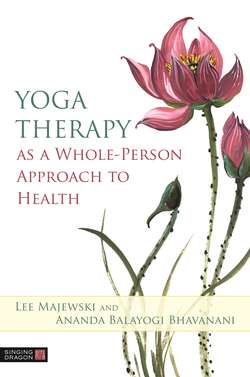Читать книгу Yoga Therapy as a Whole-Person Approach to Health - Lee Majewski - Страница 5
На сайте Литреса книга снята с продажи.
ОглавлениеPART 1
UNDERSTANDING YOGA AS THERAPY
As with any emerging field, yoga therapy is going through growing pains. The International Association of Yoga Therapists (IAYT) in the US, Australia Yoga Therapists, and other local organizations are doing valuable work in defining the scope and direction of this professional field, but there is still much confusion among the public about what yoga therapy is, and what it is not.
At one extreme, the general push for acceptance into existing healthcare systems and structures has created a reductionist definition of yoga therapy. Within the medical paradigm this results in yoga being limited to what fits neatly into such a system—working within a medical diagnosis and using asanas and pranayama to deal with the symptoms of disease in a prescriptive manner. This approach typically offers yoga for a certain symptom or diagnosis. It also often refers to meditation as existing outside of yoga, that is, yoga and meditation. For some, this is yoga therapy without the essence of yoga.
At the other extreme is the comprehensive definition of yoga therapy as a “psychospiritual technology,”1 based on the process of enhancing or promoting the healing through empowering the client. This paradigm deals with the whole person, where the disease is understood as the lack of balance in the multilevel existence of humans. With its own assessment tools, such an approach “creates a safe environment for enquiry by the client, to empower them to create new responses, free of their former reactive patterns of behavior.”2
And in-between these two extremes are all kinds of different shades and grades of approaches, depending on the yoga therapist’s training, level of personal development, and professional experience. In other words, there is still much confusion and uncertainty or debate within this emerging field. For instance, I am often asked if spirituality and yogic counseling are within the scope of yoga therapy practice! Perhaps the biggest challenge for yoga therapists as well as for the public is to break out of the cultural paradigm of our understanding of what it is to heal and how to go about it. Therefore, in this first part of our book, we attempt to clarify the misconceptions around what yoga therapy is, and offer our understanding of the essence of yoga therapy.
Outline of Part 1
Chapter 1 begins with a brief overview of modern yoga therapy in traditional and contemporary models. We review the major living traditions of yoga therapy in India, since this is where this science first came from to the West. We also outline the different traditions. This is not a comprehensive presentation by any means, but it should give an idea of the major yoga therapy lineages.
In Chapter 2 we proceed to discuss the modalities of yoga therapy and its applications as a preventive measure, and outline its principles. We look at what yoga therapy is and what it is not, introducing the concept of “yogopathy” versus “yoga therapy.” We also discuss a big concern of many contemporary therapists—how to keep yoga in yoga therapy, which includes the promise of spiritual transformation as a necessary part of the healing process.
Chapter 3 is dedicated to discussing the spiritual component of yoga therapy. In India this chapter would be unnecessary, as its cultural background is, in its essence, spiritual, with spirituality permeating the everyday life of the population. So quite naturally, the science of yoga is understood as the spiritual science. Unfortunately, the West still tends to treat spirituality exclusively as part of religion and not as part of everyday life, and there is much resistance, even fear, as we will see, in openly talking about it. (Perhaps this is the reason why yoga is often misunderstood as a form of religion.) There is also much misconception within the ranks of yoga therapists about spirituality, which many perceive as being outside of their scope. However, the body of research on spirituality as separate from religion is growing, with some researchers noting enhanced healing when the spiritual component is included. Even traditional healthcare systems are beginning to recognize the importance of the spiritual component in treating patients. Chapter 3 therefore looks at the existing research, and includes case records outlining the deep personal transformation of some of our patients on a healing journey. We propose that yoga therapy is the only secular complementary modality offering the promise of spiritual transformation as part of deep healing.
Yogic assessment lies at the core of yoga therapy. This fact is often not understood, especially by those who are limited to working only with a medical diagnosis. Yet the yogic way of assessing a patient should enhance, if not replace, medical diagnosis in our work. Chapter 4 is therefore dedicated to presenting a few different assessment tools. Although the appropriate assessment will depend on the nature of the therapist–client relationship and the environment in which the sessions are held, we hope you will find these helpful.
The assessment tools, among other factors, illustrate the level of knowledge and skill required of yoga therapists. And so, having a deeper understanding of what yoga therapy is and what tools we have at our disposal, we are ready, in Chapter 5, to look at who yoga therapists are, what makes them “good,” and how they differ from yoga teachers.
